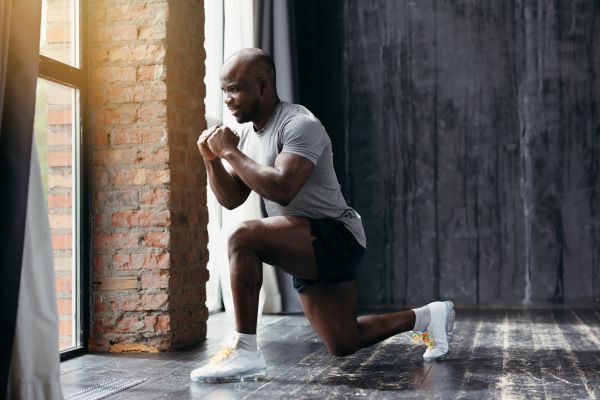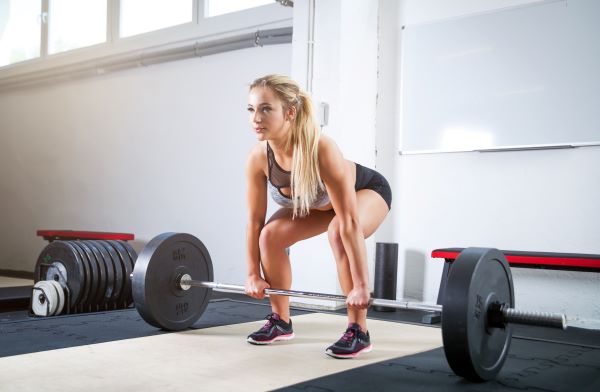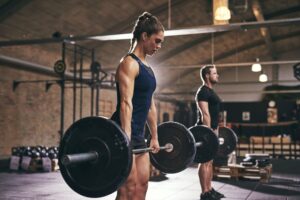When it comes to the best leg workouts, there’s more than meets the eye. Building strong and powerful legs requires a deep understanding of the anatomy of leg muscles and how they function in various exercises. In this blog post, we’ll delve into the intricacies of training your lower body to help you achieve optimal results.
Targeting the major leg muscle groups of quadriceps, hamstrings, glutes, and calves through a practical workout routine can help to promote both size and strength while avoiding injury. We will explore some of the most efficient leg exercises for targeting these areas, as well as discuss essential aspects such as nutrition for fueling your workouts.
In addition to providing valuable information about the best leg workouts, we will also offer tips on injury prevention so that you can continue training without setbacks or knee pain. This comprehensive guide is designed to equip you with everything needed for a successful lower body transformation journey.
Table of Contents:
- Anatomy of the Leg Muscles
- Benefits of Leg Workouts
- Exercises for Strong Legs
- Injury Prevention Tips
- Nutrition for Leg Workouts
- FAQs in Relation to Best Leg Workouts
- Conclusion
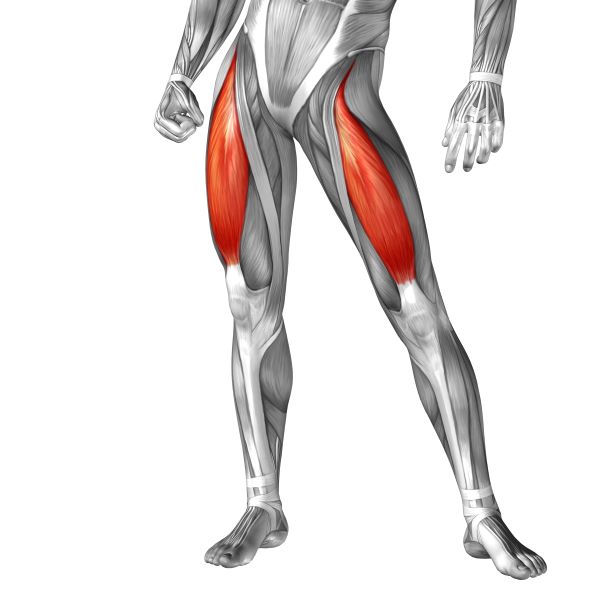
1. Anatomy of the Leg Muscles
The legs are composed of various major muscle groups that work together to support movement and maintain stability in everyday activities, as well as during intense workouts. Understanding the anatomy of these muscles can help you target them effectively during your leg exercises and improve overall lower body strength.
Quadriceps
The quads, a group of four muscles situated at the front of your thigh, are collectively known as the quadriceps. These include the rectus femoris, vastus lateralis, vastus medialis, and vastus intermedius. The primary function of this muscle group is knee extension (straightening) and hip flexion (bending). The quadriceps are essential for activities like walking, running, jumping, and squatting.
Hamstrings
The hamstrings consist of three muscles situated at the backside of your thigh: biceps femoris (long head), semitendinosus, and semimembranosus. They primarily perform knee flexion (bending) and hip extension (straightening). Hamstrings are essential for daily activities like walking uphill or downstairs but also contribute significantly to explosive movements like sprinting or jumping.
Adductors
Your inner thighs house a group called adductor muscles which include adductor longus, adductor magnus, adductor brevis, pectineaus, and gracilis. Their main function is to bring your legs closer together – an action known as hip adduction – providing stability when standing on one foot or changing direction quickly while running.
Glutes
The gluteal muscles, or “glutes,” are a group of three muscles located in your buttocks: gluteus maximus, gluteus medius, and gluteus minimus. These powerful muscles contribute to hip extension (straightening), abduction (moving the leg away from the body), and rotation. Well-developed glutes can be beneficial for posture, reducing lower back discomfort, and optimizing athletic performance.
Gastrocnemius and Soleus
Your calf muscles consist of two primary components: gastrocnemius – the larger muscle visible on the surface – and soleus which lies beneath it. Together they form an essential part of ankle plantar flexion (pointing your toes) as well as knee flexion for gastrocnemius only. Calf strength is vital for activities like walking uphill or jumping off both feet simultaneously during sports such as basketball or volleyball.
Incorporating targeted exercises into your leg workouts will ensure you’re effectively training all major muscle groups while building balanced strength throughout your lower body. Training legs is important for muscle size and strength. Leg day is a crucial part of any workout routine, but it’s essential to prevent injury by using proper form and technique. One of the most effective leg exercises is the leg press, which targets all major muscle groups in the lower body. However, it’s important to vary your leg workouts to prevent boredom and ensure balanced muscle development.
Don’t forget to also incorporate exercises that target your upper body and core to maintain overall fitness and balance. Additionally, stretching and foam rolling after your leg workouts can help prevent knee pain and other injuries.
Understanding the anatomy of your leg muscles is key to achieving effective and efficient results from any leg workout. Subsequently, let’s explore the advantages of doing regular lower body exercises.
Key Takeaway:
Understanding the anatomy of leg muscles is crucial for effective targeting during exercises. The leg muscles, such as quadriceps, hamstrings, adductors, glutes, and calf muscles are integral to everyday activities like walking or running and thus should be given due attention when designing a workout. Incorporating targeted exercises into your leg workouts will ensure you’re effectively training all major muscle groups while building balanced strength throughout your lower body.
2. Benefits of Leg Workouts
Strengthening your leg muscles through targeted workouts offers numerous advantages for overall health and fitness. Incorporating regular leg workouts into your routine can result in a more advantageous body structure, enhanced athletic aptitude, and diminished danger of harm. In this section, we will explore the various benefits associated with a well-rounded leg workout regimen.
Improved Body Composition
Focusing on leg workouts helps develop lean muscle mass in the lower body, which contributes to an increase in metabolism and calorie burning even at rest. This results in better weight management and a more toned appearance throughout the entire body.
Enhanced Athletic Performance
A strong foundation is essential for excelling in any sport or physical activity. By incorporating effective leg exercises into your training program, you’ll notice improvements in speed, agility, power output, as well as balance – all crucial components of athletic performance.
Reduced Risk of Injury
Leg workouts help strengthen not only the major muscles but also stabilize smaller supporting muscles around joints such as knees and ankles. This provides greater joint stability during daily activities or sports participation while reducing the likelihood of injuries like sprains or strains.
Better Posture & Lower Back Support
- Better posture: Strong legs contribute to maintaining proper alignment throughout the spine by providing adequate support for upper-body movements.
- Lower back support: A balanced approach to strengthening both anterior (frontal) and posterior (rear) lower-body muscle groups ensures that there’s no excessive strain placed on the lower back, reducing the risk of pain and injury.
Increased Functional Fitness
Functional fitness refers to exercises that improve your ability to perform everyday tasks with ease. Leg workouts can enhance functional fitness by strengthening muscles used in activities such as walking, climbing stairs, or lifting heavy objects. This leads to a better quality of life and increased independence as you age.
Incorporating leg workouts into your exercise routine is essential for overall health and well-being. By targeting these major muscle groups, you’ll experience benefits ranging from improved body composition to enhanced athletic performance and reduced risk of injury. So don’t skip leg day – embrace it.
Leg workouts can help improve overall strength and balance, which is beneficial for many activities. With that in mind, let’s now explore some exercises designed to target the legs and maximize strength and power.
Key Takeaway:
Engaging in regular leg exercises can yield a variety of advantages, including improved body composition, greater athletic capability, diminished risk of injury, better posture and lumbar support, as well as heightened practical fitness. By targeting major muscle groups in the lower body through effective exercises, you can achieve a toned appearance throughout your entire body while improving your ability to perform everyday tasks with ease. So don’t skip leg day – it’s essential for overall health and well-being.
3. Exercises for Strong Legs
Building strong legs requires a combination of exercises that target each muscle group effectively. In this section, we will discuss the best leg workouts to help you achieve powerful and well-defined legs.
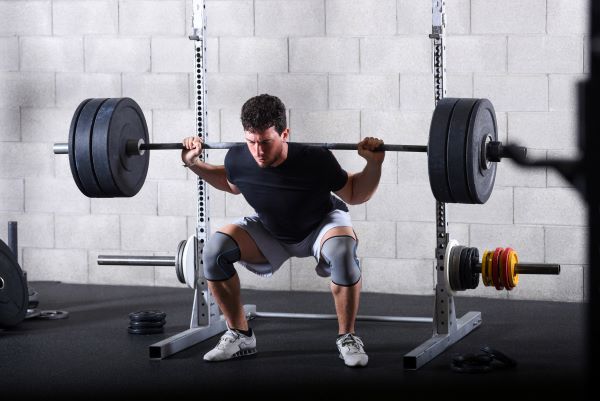 Squats
Squats
Squats are an essential exercise for building overall leg strength, as they engage multiple muscles such as quadriceps, hamstrings, glutes, and calves. To perform squats correctly:
- Stand with your feet shoulder-width apart.
- Bend your knees while pushing your hips back like sitting on a chair.
- Maintain a straight back and keep your chest up throughout the movement.
- Rise back up to a standing position by driving through your heels.
Lunges
Lunges are another excellent exercise for targeting the quads, hamstrings, and glutes. Here’s how to do them properly:
- Start in a standing position with feet hip-width apart.
- Step forward with one foot while bending both knees at a right angle (90 degrees).
- Keep your front knee directly above the ankle and your back knee hovering just above the ground.
- Push through your front heel to return to a standing position and repeat on the other side.
Deadlifts
Deadlifts are a powerful exercise for strengthening the hamstrings, glutes, and lower back. To perform deadlifts correctly:
- Stand with your feet hip-width apart and hold a barbell or dumbbells in front of you.
- Bend at the hips and knees while keeping your back straight, lowering the weight towards the ground.
- Drive through your heels to return to a standing position, engaging your glutes as you rise up.
Leg Press
The leg press is an effective machine-based exercise that targets the quadriceps, hamstrings, and glutes. Follow these steps:
- Sit on the leg press machine with feet shoulder-width apart on the platform.
- Bend knees toward chest while keeping feet flat on the platform.
- Push through heels until legs are fully extended but without locking knees.
- Slowly return to starting position by bending your knees again.
Calf Raises
Calf raises are an essential exercise for developing strong and defined calves. Here’s how to perform them correctly:
- Stand with your feet hip-width apart on a flat surface or the edge of a step.
- Raise your heels off the ground by engaging your calf muscles.
- Hold for a moment at the top before slowly lowering back down to starting position.
By performing these exercises with proper form and technique, you can strengthen your legs while reducing the risk of injury. Remember to always prioritize proper form and technique to maximize results and minimize the risk of injury.
Exercises targeting leg strength are an integral component of any exercise regimen and must be performed correctly to maximize their effectiveness. Injury prevention is paramount, so it’s essential to warm up correctly prior to each exercise session in order to reduce the possibility of harm.
Key Takeaway:
To target each leg muscle group and maximize results, add squats, lunges, deadlifts, leg presses, and calf raises to your routine. Incorporating these exercises into your routine will help you target each muscle group effectively while prioritizing proper form and technique to maximize results. Remember that building powerful legs takes time and dedication.
4. Injury Prevention Tips
While leg workouts are essential for building strength and improving overall fitness, it’s crucial to take precautions to avoid injuries during these exercises. Here are some tips on how you can prevent injuries while performing leg workouts:
Warm-Up and Stretching
Prioritize warming up before diving into your workout routine. A proper warm-up increases blood flow, loosens muscles, and prepares the body for more intense activities. Incorporate dynamic stretches such as leg swings or high knees that target the major muscle groups in your legs.
Maintain Proper Form
Maintaining correct form is vital when performing any exercise, especially those targeting large muscle groups like the legs. Incorrect form can lead to unnecessary strain on joints and ligaments, increasing injury risk. Consider working with a personal trainer or using online resources like Scott Herman Fitness YouTube channel to learn proper techniques.
Gradual Progression of Intensity
Rapidly increasing weight or intensity levels without giving your body time to adapt may result in overuse injuries such as strains or sprains. Ensure you progress gradually by slowly adding weights or incorporating more challenging variations of exercises over time.
- Tip: Follow the 10% rule – increase volume (weight x reps) by no more than 10% per week.
Listen To Your Body
If something doesn’t feel right during an exercise session, stop immediately. It’s better to be cautious than push through pain and risk further injury. Rest, ice, compress, and elevate (RICE) any injured areas to reduce inflammation and promote healing.
Incorporate Recovery Days
Rest days are essential for muscle recovery and preventing overuse injuries. Ensure you schedule at least one rest day per week to allow your muscles time to repair themselves after intense workouts.
Strengthen Supporting Muscles
Developing strong stabilizing muscles can help prevent injuries by providing additional support during leg exercises. Include exercises like glute bridges or clamshells in your routine to strengthen these supporting muscles.
Incorporating these suggestions into your leg training regimen will not only aid in injury prevention but also help ensure you get the most out of each workout session while remaining safe.
Injury prevention tips are essential for any leg workout routine to ensure you don’t overwork your muscles and risk an injury. In order to maximize the potential of your leg workouts, you should also take into account what kind of nutrition can help provide energy for them.
Key Takeaway:
To prevent injuries during leg workouts, warm-up and stretch properly, maintain correct form, gradually increase intensity levels by following the 10% rule, listen to your body, and incorporate recovery days. Strengthening supporting muscles like the glutes can also help prevent injuries. Remember that rest days are essential for muscle recovery.
5. Nutrition for Leg Workouts
Proper nutrition is essential to support leg workouts and recovery from them. For maximal leg workout performance, a nutrient-dense diet is essential to promote muscle growth and repair. In this section, we will discuss the key nutritional components that are crucial for optimal performance during leg exercises.
Adequate Protein Intake
Protein plays a vital role in muscle building and repair after strenuous workouts. Consuming an adequate amount of protein helps to provide the necessary amino acids required for muscle synthesis. Aim to include high-quality protein sources such as lean meats, fish, eggs, dairy products, beans, or tofu in each meal throughout the day.
Carbohydrates for Energy
Carbohydrates serve as the primary source of energy during intense physical activities like leg workouts. Including complex carbohydrates such as whole grains (brown rice or quinoa), fruits, and vegetables ensures a steady supply of glucose needed by muscles during exercise sessions.
Fueling Pre-Workout Meals
- For optimal pre-workout nutrition, enjoy a balanced meal containing moderate amounts of carbohydrates and lean proteins 1-2 hours prior to your workout session.
- For those pressed for time prior to a workout, try snacking on quickly-digested carbs like bananas with some peanut butter or granola bars no more than half an hour before exercise.
Nutrient Timing for Post-Workout Recovery
- After completing your leg workout, consume a meal or snack containing both carbohydrates and proteins within the first 30 minutes to promote muscle recovery.
- Examples of post-workout meals include whole-grain toast with turkey slices and avocado, or a protein shake blended with fruits like berries or banana.
Stay Hydrated
Maintaining proper hydration levels is crucial for overall health and exercise performance. Dehydration can lead to fatigue, decreased strength, and reduced endurance during workouts. Aim to drink water consistently throughout the day, as well as before, during, and after your leg training sessions. A general guideline is to consume at least 8 cups (2 liters) of water daily, but individual needs may vary depending on factors such as body weight and activity level.
Incorporating these nutritional strategies into your routine will not only support optimal performance during leg workouts but also aid in muscle recovery afterward. Remember that consistency in both nutrition and training is key to achieving desired results from your fitness journey.
Key Takeaway:
To achieve optimal performance during leg workouts, it’s crucial to have a well-balanced diet rich in nutrients. Having sufficient protein intake is critical for the growth and repair of muscles, while carbohydrates offer energy during strenuous physical activity. Fueling pre-workout meals with balanced carbs and proteins, consuming post-workout meals containing both carbohydrates and proteins within 30 minutes of exercise, and staying hydrated consistently throughout the day are key takeaways from this section.
FAQs in Relation to Best Leg Workouts
What is the Best Leg Workout?
The most effective leg workouts are those that target multiple muscle groups and involve compound exercises, such as squats, lunges, deadlifts, and leg presses. These exercises have been proven to stimulate growth hormone production and increase overall strength. For optimal results, combine these exercises with proper nutrition and adequate rest.
What are the Most Important Leg Workouts?
The most important leg workouts include:
- Squats
- Lunges
- Deadlifts
- Leg Presses
- Calf Raises
- Hamstring Curls
How Effective are Leg Exercises?
Leg exercises can be highly effective in building strength, improving balance and stability, increasing muscle mass, and burning calories for weight loss or maintenance purposes. The effectiveness of a specific exercise depends on factors like technique execution quality or intensity level applied during training sessions.
Does Hitting Legs Release Testosterone?
Yes, leg workouts can increase testosterone levels. The major muscle groups in the legs, such as the quadriceps, hamstrings, and glutes, are some of the largest in the body. Training these muscles with compound exercises like squats and deadlifts can stimulate the release of testosterone, which can help with muscle growth and overall strength.
However, it’s important to note that testosterone release is not the only benefit of leg workouts. Training your legs can also help prevent injury, improve posture, and increase overall athletic performance.
So, whether you’re looking to build muscle size or simply improve your overall fitness, incorporating leg exercises into your strength training routine is essential.
Conclusion
Now that you have learned about the anatomy of leg muscles, the benefits of leg workouts, exercises for strong legs, injury prevention tips, and nutrition for leg workouts, you are equipped with the knowledge to start your journey toward building stronger legs. Remain steadfast in your pursuit of stronger legs and consistent effort is necessary to attain the desired outcome. Incorporate these exercises into your routine and stay committed to seeing results.
If you want more guidance on how to achieve your fitness goals or need help creating a workout read more on Inspired Health & Fitness.
Start today by taking the first step towards becoming healthier and happier!

